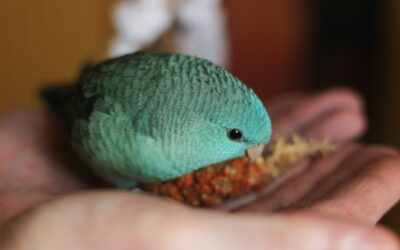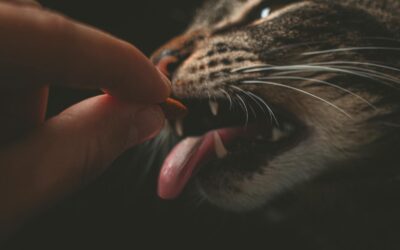When considering a unique and charming pet, rats may not be the first animal that comes to mind, but they’ve increasingly become a popular choice for animal lovers. Pet rats are intelligent, social creatures that can form strong bonds with their owners. However, one key question anyone looking to adopt a rat might ask is, “How long do pet rats live?
This guide will explore the lifespan of pet rats, what influences their longevity, and how to ensure a happy, healthy rat that lives as long as possible.

Average Lifespan of Pet Rats vs. Wild Rats
While pet rats and wild rats may belong to the same species, there are significant differences between the two in terms of behavior, care needs, and lifestyle.
Environment
Domesticated pet rats are raised in controlled environments where they depend on humans for food, shelter, and companionship. They are accustomed to living in clean, secure enclosures and thrive on interaction with their owners. Wild rats, on the other hand, must adapt to harsh and unpredictable environments, often scavenging for food and finding shelter in urban or natural landscapes.
Behavior
Pet rats are typically more sociable and friendly due to selective breeding for calm temperaments. They enjoy human interaction, can form strong bonds with their owners, and even learn tricks. Wild rats are naturally wary of humans and rely on their instincts for survival, exhibiting more defensive and cautious behaviors.
Health and Lifespan
Pet rats receive regular care, such as proper nutrition, clean living conditions, and veterinary attention, which contributes to better overall health. This care can extend their lifespan to 2–3 years. Conversely, wild rats often face numerous threats, such as predators, disease, and limited access to food or clean water, leading to much shorter lifespans, averaging about 1 year.
Appearance
Pet rats are bred for a variety of physical traits, including different coat colors, patterns, and types, such as hairless or dumbo-eared varieties. Wild rats, however, are often a uniform brown rats or gray, ensuring camouflage in their natural habitat.
Understanding these differences highlights why pet rats are well-suited for life with humans, while wild rats are better adapted to their rugged, free-roaming existence.

Factors Influencing a Pet Rat’s Lifespan
-
Diet and Nutrition: A well-balanced diet is one of the most significant factors in ensuring a long and healthy life for pet rats. Providing fresh fruits, vegetables, and high-quality rat pellets helps meet their nutritional needs. Avoid feeding them sugary or fatty treats excessively, as these can lead to obesity and related health problems, such as diabetes. Additionally, always ensure clean, fresh water is available to keep them hydrated and maintain proper bodily functions.
-
Living Environment: The quality of a rat’s living environment plays a vital role in their overall health. A spacious, clean, and well-ventilated cage reduces stress levels and minimizes the risk of respiratory issues or infections. Bedding materials should be safe, non-toxic, and regularly cleaned to remove waste and odors. A comfortable and enriched environment with hiding spots and climbing areas can also contribute to their psychological well-being.
-
Health Care: Regular check-ups with a veterinarian experienced in small animals are essential for early detection of illnesses. Common conditions like respiratory infections, tumors, or dental issues can dramatically shorten a rat’s lifespan if left untreated. Vaccinations and preventive care, along with prompt attention to any signs of illness, ensure that your pet rat remains in optimal health.
-
Social Interaction and Mental Stimulation: Rats are highly social and intelligent animals that thrive on interaction. Isolation can lead to loneliness, depression, and even physical decline. Keeping rats in pairs or groups, when compatible, satisfies their need for companionship. Additionally, providing toys, tunnels, and puzzles helps keep their minds active, which can reduce stress and encourage healthy behaviors.
-
Genetics: Genetics also play a role in determining a rat’s lifespan. Some rats may be predisposed to certain illnesses, such as mammary tumors or respiratory diseases, based on their lineage. While this factor is beyond an owner’s control, proper care in other areas can help mitigate potential genetic risks and extend the rat’s overall lifespan.
By addressing each of these factors, owners can create an environment that promotes not only a longer life but also a healthier and happier existence for their pet rats.
Types of Pet Rats and Your Pet Rat’s Life Expectancy
Fancy Rats
Fancy rats, also known as domesticated brown rats (Rattus norvegicus), are the most common pet rats. With proper care and attention, these rats live for 2–3 years. Their charming personalities and social nature make them one of the best options for anyone new to keeping rats.
Dumbo Rats
Named for their distinctive large, round ears, dumbo rats are technically a variety of fancy rats. They generally have the same average lifespan of 2–3 years and thrive with good care, love, and engagement. Their affectionate temperament makes them a favorite among rat enthusiasts.
Hairless Rats
Hairless rats, often bred for their unique appearance, have shorter lifespans compared to other rats. Most hairless rats live for 1.5 to 2 years due to their susceptibility to skin conditions and respiratory issues. They require a bit of extra care, such as softer bedding to protect their delicate skin.
Male vs. Female Rats
While both male rats and female rats can live healthy lives of up to 3 years, there are some differences in their health risks:
- Females are more prone to mammary tumors, which can shorten their lifespan if left untreated.
- Males may experience conditions like respiratory illnesses or weight-related issues as they age.
Regardless of gender, regular veterinary care can help manage these risks and prolong their lives.
Wild Rats vs. Pet Rats
Unlike pet rats, wild rats live a life of constant danger and may only survive for a few months to a year due to environmental dangers, food shortages, and predators like cats, hawks, and snakes. The controlled environment that pet rats live in gives them a substantial advantage over their wild counterparts.
How to Help Your Pet Rats Live Longer
Owning a pet rat comes with the responsibility of ensuring they live as long and as healthily as possible. Here’s how:
Provide a Balanced Diet
Rats are omnivores, meaning they require a mix of fruits, vegetables, grains, and good-quality rat pellets. Avoid giving your rat excessive sugary or fatty treats, as poor diets can lead to obesity or diseases like diabetes. Always provide fresh, clean water from a water bottle to keep them hydrated.
Keep a Clean Living Space
A rat’s cage should feel safe and be cleaned regularly to prevent the buildup of ammonia from urine, which can harm your pet’s respiratory system. Provide soft bedding, functional hiding spots, and chewing toys to keep their environment comfy and engaging.
Enrichment and Exercise
Rats are intelligent and social animals, so mental stimulation is crucial. Provide toys, climbing opportunities, and tunnels to keep them entertained. Rats that exercise are less likely to gain excess weight, reducing their risk of certain health issues.
Watch for Health Problems
Keep an eye out for changes in your rat’s health:
- Weight Loss or Hair Coat Changes: These could indicate illness.
- Poor Eyesight: Older rats often show signs of declining vision.
- Unusual Behavior: Always monitor for signs of lethargy, difficulty breathing, or swelling near their rear end or abdomen.
If you notice these symptoms, don’t hesitate to contact a veterinarian specializing in rodents.
Ensure Social Interaction
Rats thrive on companionship, whether with other rats or humans. Ideally, adopt more than one rat to prevent loneliness. However, introduce other rats gradually to avoid any territorial disputes.
Regular Veterinary Visits
Because rats can hide signs of illness, an annual checkup is essential for catching potential issues early. Stay proactive about their health, especially as they age.

Are Rats Right for You?
Pet rats are incredibly rewarding to own. They’re some of the most intelligent and affectionate domestic rats, allowing for meaningful interaction that you might not get with other common pets like fish or hamsters. However, remember that rats require care just like dogs, cats, or other animals, and their relatively short lifespan means you’ll need to cherish your time with them.
If you’re ready for the challenge, these low-maintenance yet highly engaging pets may be the perfect addition to your home.
Kate’s K9 Pet Care’s Small Animal Pet Care Services
At Kate’s K9 Pet Care, we understand that small animals like pet rats, guinea pigs, and hamsters require specialized care to thrive. Our dedicated team is experienced in handling the unique needs of these tiny companions. From ensuring they have a clean and safe living environment to providing social interaction and playtime, we prioritize their well-being in every aspect.

Make Your Rat’s Life Count | How Long Do Pet Rats Live?
Understanding the typical lifespan of a pet rat and how to extend it ensures a fulfilling life for your furry friend. By providing proper care, nutrition, and enrichment, you can enjoy 2–3 years of joy, companionship, and love with your rat.
Thinking about welcoming some rats as pets into your life? Make sure to connect with a reputable pet store or breeder and consult a veterinarian to get started. Remember, these small rodents can play a significant role in enriching your life if given the chance to thrive.






